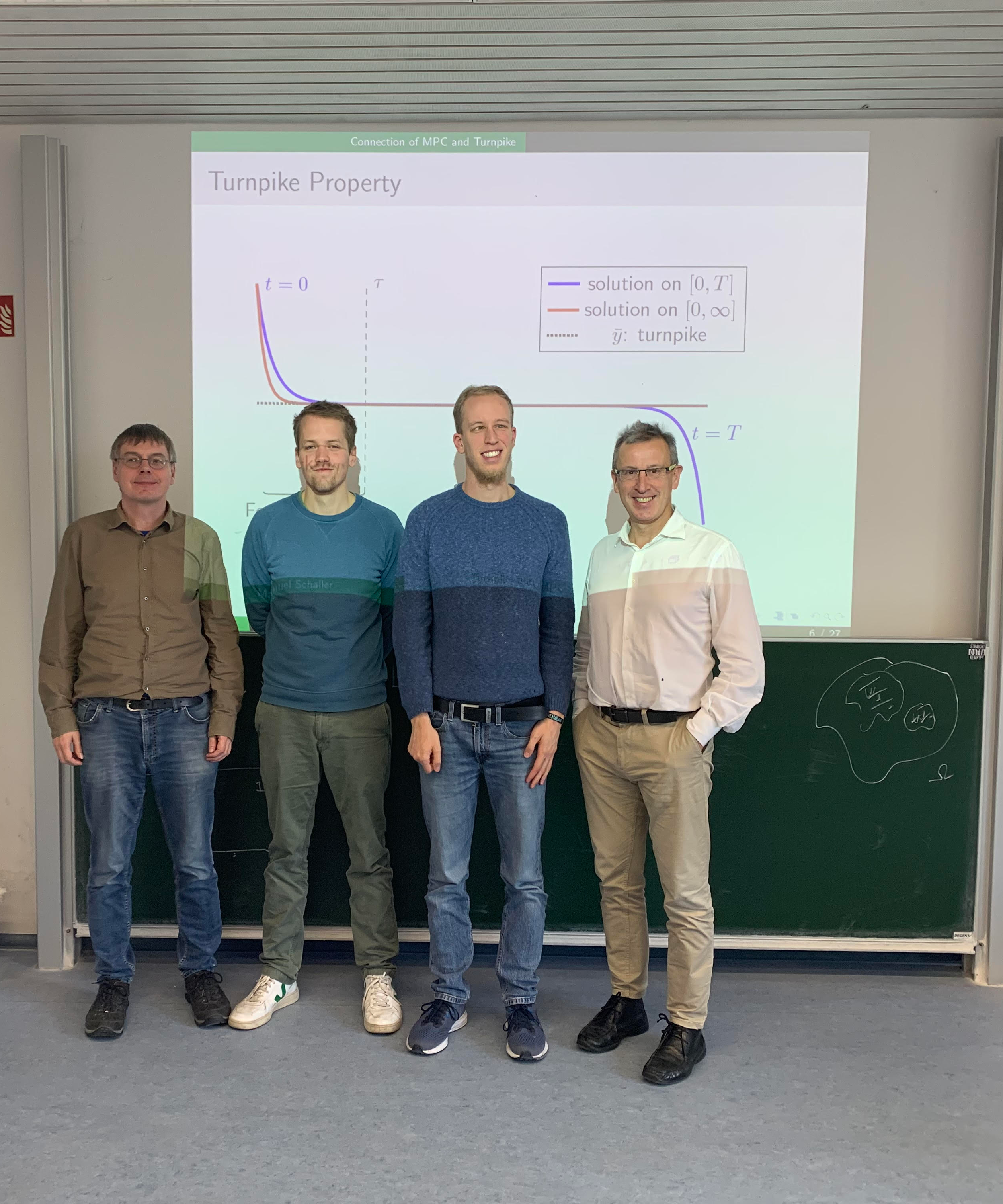Germany. 17.10.2019. On October 17th, 2019, the head of the Chair Enrique Zuazua made an introduction about “Turnpike in a Nutshell” and our team member Dario Pighin talked about the “Turnpike theory and application” at the Seminar session hosted by the Department of the Applied Mathematics at Friedrich-Alexander-Universität, Erlangen-Nürnberg, Germany.
Turnpike theory: An introduction
Enrique Zuazua. FAU | University of Deusto | Chair of Computational Mathematics | UAM
Abstract: Turnpike properties have been established long time ago in finite-dimensional optimal control problems arising in econometry. They refer to the fact that, under quite general assumptions, the optimal solutions of a given optimal control problem settled in large time consist approximately of three pieces, the first and the last of which being transient short-time arcs, and the middle piece being a long-time arc staying exponentially close to the optimal steady-state solution of an associated static optimal control problem. This property, sometimes in an implicit manner, is often used in applications.
Turnpike theory and application
Dario Pighin. Universidad Autónoma de Madrid (UAM) | Chair of Computational Mathematics, Deusto Foundation-University of Deusto. See slides here
Abstract: Under appropriate assumptions, the optima of a time-evolution control problem simplifies as the time horizon T goes to infinity, namely converge to the corresponding steady optima. When this occurs, we say the control problem enjoys the turnpike property. Some theoretical results both in ODE control and PDE control will presented. An industrial application to rotors imbalance suppression will be given. An open problem is posed: uniqueness of the optimal control in a control problem governed by a semilinear PDE.


